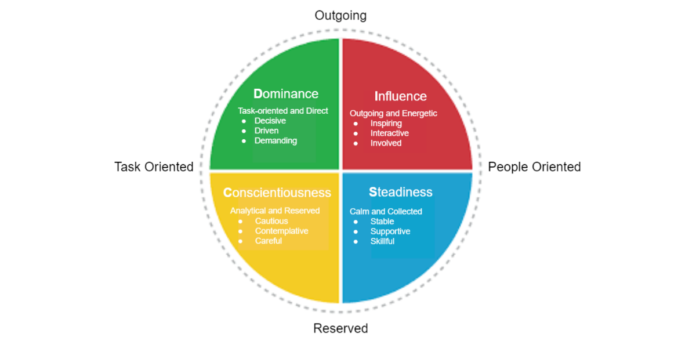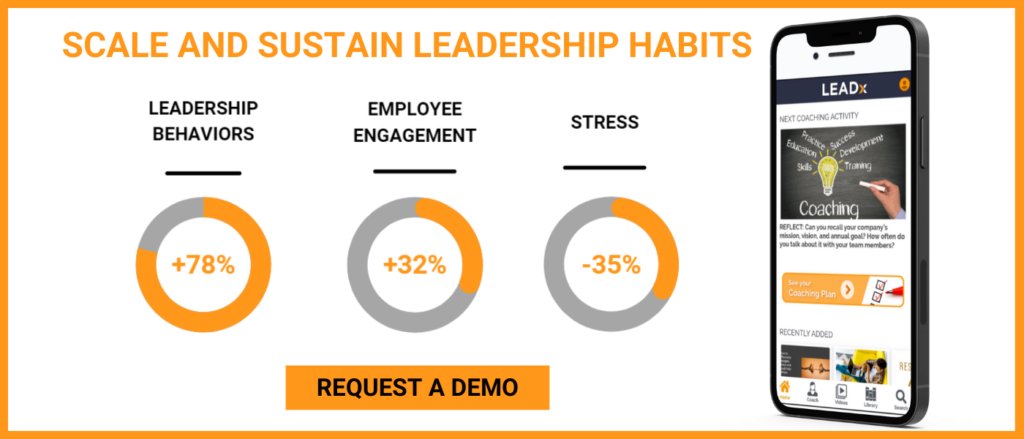
Writing a solid email is one thing. Writing an email that captures the attention of the reader is another. We are all inundated with emails every day, and that includes your customers, colleagues, prospects, and friends. To give your messages the best chance of standing out and having an impact, modify your own communication style so it aligns with the communication style of the reader.
To get started, review the DISC personality styles — Dominance (D), Influence (I), Steadiness (S), and Conscientiousness (C). While everyone is a mix of all styles, focusing on the key style of the reader as you are writing your email, can help ensure your message is opened, and read.
The D Style
People with D-style personalities tend to be confident, assertive, and interested in bottom-line results. They may be blunt and outspoken and have little patience for things that they feel are a waste of time.
To capture the attention of a D-style reader, emails should:
- Be brief and get right to the point
- Avoid small talk
- Use bullet points rather than paragraphs
- Be business-like and concise
- Avoid wordy greetings and closings, or delete them altogether
Try subject lines that are clear and self-explanatory, such as:
- Action Needed: Ideas due to client Friday
- Expense report deadline extended to the 15th
- Team Meeting Rescheduled for Friday 10-11 AM PST
If you’ve ever received an email that included a subject line and nothing else, a D-style personality probably wrote it.
The bottom line for communicating with D-styles: Get to the point in as few words as possible.
The I Style
People with I-style personalities tend to be open, enthusiastic, collaborative, and trusting. They respond to praise, value relationships, and shape their worlds through influence and persuasion. They may struggle with organization and staying focused.
To capture the attention of an i-style reader, emails should:
- Include a warm greeting and closing
- Focus on the positive
- Be enthusiastic and open; share personal stories
- Invite questions and the opportunity to discuss and share
- Avoid too many details
Try subject lines that are enthusiastic, creative, and fun, such as:
- Best idea contest! Invitation to brainstorm solutions for our client
- Good news and found time- expense report due date extended
- Team meeting update – time change and agenda details enclosed
Long emails full of jokes, emojis, and exclamation points, and that take a while to get to the point may be written by an i-style personality.
The bottom line for communicating with i-styles: Generate excitement and a sense of collaboration and fun.
The S Style
People with S-style personalities tend to be inclusive, dependable, and sincere. They prioritize giving support to others, and value loyalty, stability, and team success. They may struggle with indecisiveness and adapting to change.
To capture the attention of an S-style reader, emails should:
- Include a polite greeting and warm closing
- Be friendly, personable, and polite
- Express interest in the reader’s opinion
- Explain the details and be clear about your expectations
- Do not push; invite questions and offer to send follow up information
Try subject lines that are respectful, clear, and interested in the reader’s expertise, such as:
- Your expertise needed – client solutions brainstorming meeting
- Expense report deadline update reminder – don’t forget to submit by the 15th
- FYI – team meeting has been rescheduled to Friday 10-11 PST
Emails written by S-style personalities tend to be personalized and friendly and can be tailored to the style of the reader.
The bottom line for communicating with S-styles: Be friendly, don’t be pushy, and clearly communicate your expectations.
The C Style
People with C-style personalities tend to be careful, analytical, and systematic. They value accuracy and the opportunity to produce quality work. They may struggle with perfectionism, compromise, making quick decisions, and delegating tasks to others.
To capture the attention of a C-style reader, emails should:
- Include a standard greeting and closing, but nothing too emotional
- Include data and facts, and/or pros and cons
- Include complete explanations and answers to any questions asked
- Be diplomatic and avoid emotional language
- Give time for the C-style to process the information; if you need an answer in a hurry, clearly explain the deadline upfront
Try subject lines that are non-emotional and descriptive, such as:
- Brainstorming meeting next week – see info and details below
- Expense reports and all receipts due by the 15th
- Rescheduling the team meeting to accommodate schedules. New time: Friday 10-11 AM PST
If you receive an email that is super long and filled with information, data, pros/cons, links to additional information, and follow-up questions, you’re likely hearing from a C-style personality.
The bottom line for communicating with a C-styles: Provide all the data and information needed, and time for the reader to process it.
Of course, this will be easier if you happen to know the readers’ DISC style already, but even if you don’t, you can make some assumptions to give your message a better chance of being read.
Take a look at any emails the person has written you, are they:
- Short and/or blunt, and to the point (D-style)
- Friendly and enthusiastic, or long and meandering (i-style)
- Positive and personalized (S-style)
- Lengthy and filled with questions, comments, and additional information (C-style)
If you don’t know the person or have never received an email from them, you can explore their social media presence for clues.
D-styles can be direct, driven, and perceived as demanding — and their social media presence may reflect that. They may post only to promote their own thoughts and ideas, using short targeted messages.
i-styles are enthusiastic and outgoing and are likely to post much more frequently and about a broad range of topics. Assume you will find emojis and comments on others’ posts as well. They likely have a lot of friends on multiple platforms.
S-styles are more reserved and may limit their social media to those closest to them. They may post on multiple platforms but not as frequently or enthusiastically as the i-Styles, and their posts are likely more intentional and personal.
C-styles tend to be introverted, but they like information. So while they may be on multiple social media platforms, because of their careful consideration to what they put out in the world, they may not post, or comment on others’ posts, much at all.
Try using the DISC styles to give your emails a better chance of cutting through the noise and effectively communicating with your co-workers, prospects, and friends.







